Slicing consistently can ruin your day out on the course. So I tried out a bunch of the drivers out there that are designed to help control that slice.
If you want to cut right to the results, I think the Ping 425 SFT is the best driver for slicers.
But there are a lot of other great options, so keep reading for the full breakdown.
The product links in this article are affiliate links, which means we get a small commission when you use them to buy. It doesn’t cost you more and helps to support this website.
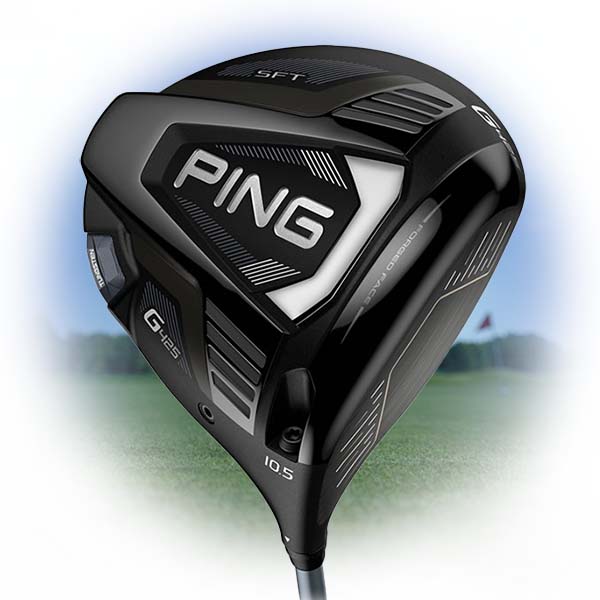
1. Ping 425 SFT
Whether you have a little or a long way to go in your journey to eliminate a slice, a Ping 425 SFT will get you moving in the right direction.
When you find a club providing a permanent solution to the problem, it’s a club worth investing in. A slice doesn’t go away without serious work by way of lessons, weekly range sessions, and in some cases, divine intervention.
A workaround for the age-old challenge of a slice is a club with a draw bias. The Ping 425 SFT delivers through straight flight technology (SFT) engineering and subtle elements that make a major impact.
Ping 425 sft Specs
- Loft: 10.5° (Adjustable +/- 1.5°) (same for left-handed)
- Lie: 58.5°
- Head Size: 460cc
- Adjustable Hosel: Yes
- Adjustable Weights: No
- Stock Shafts:
- PING Alta CB 55 Slate 57g, 60g, 64g
- PING Tour 65 58g, 62g, 67g
- Aldila Rogue White 130 MSI 70 65g, 69g, 71g
- Mitsubishi Tensei AV Orange 55 50g, 52g
- Mitsubishi Tensei AV Orange 65 61g, 64g, 66g
- PING Alta Distanza 40g
A slight offset and a clubface prepared for hits off-center make this a top choice for correcting a slice. Whether this is your first draw bias club or you’re replacing an old one, any golfer will benefit from having this club in their bag.
Pros
- Eight hosel positions give you the freedom to adjust for further slice reduction or go the other way if necessary.
- This is the clear choice among all Ping drivers, with the SFT model testing better against their entire lineup for overall flight straightening and shaping the ball right to left.
Cons
- We weren’t sure where to list this one, but the precision forged face means it’s abundantly clear when you make contact at the center of the face. It’s still forgiving, but there is a disparity between center and off-center hits.
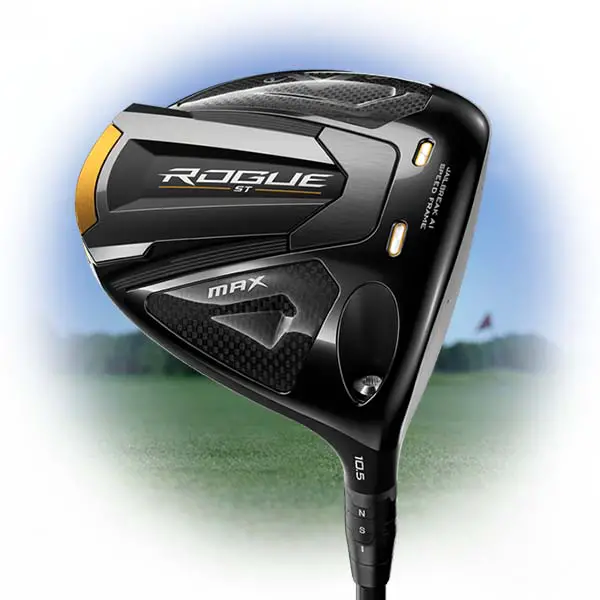
2. Callaway Rogue ST Max
Callaway makes a lot of good clubs. But, there’s no better club for getting rid of a slice than the Rogue ST Max.
For a skilled golfer struggling with shot shape, you might only need a little assistance. Whether you’re trying to eliminate a small slice or add a few yards through a baby draw, the Callaway Rogue ST Max is ready.
With this club, it’s all about weight. Here, you can place up to 26 grams of weights in the clubhead that ultimately controls the center of gravity.
Callaway Rogue ST Max Specs
- Lofts: 9° (Adjustable 8°-11°), 10.5° (Adjustable 9.5°-12.5°), 12° (Adjustable 11°-14°)
- Lie: 59° (adjustable from -1° to +2°)
- Head Size: 460cc
- Swing Weight: D3
- Adjustable Hosel: Yes
- Adjustable Weights: No
- Stock Shafts:
- Mitsubishi Tensei AV Blue 55 Graphite 55g
- Mitsubishi Tensei AV Blue 65 Graphite 65g
- Mitsubishi Tensei AV White 65 Graphite 65g
- Fujikura Ventus Blue 5 (non-velocore) Graphite 50g
- Fujikura Ventus Blue 6 (non-velocore) Graphite 60g
At max-weight, you have a low center of gravity towards the back of the club. This effectively enlarges the sweet spot and becomes more forgiving of contact at the heel—a big help for eliminating a slice.
Pros
- Multiple loft options (which are also adjustable) for right and left-handed golfers
- Some of the lowest spin levels you’ll find on a premium driver.
Cons
- Not an option for high handicappers looking for substantial help.
Check out my full review of the Rogue ST Max here.
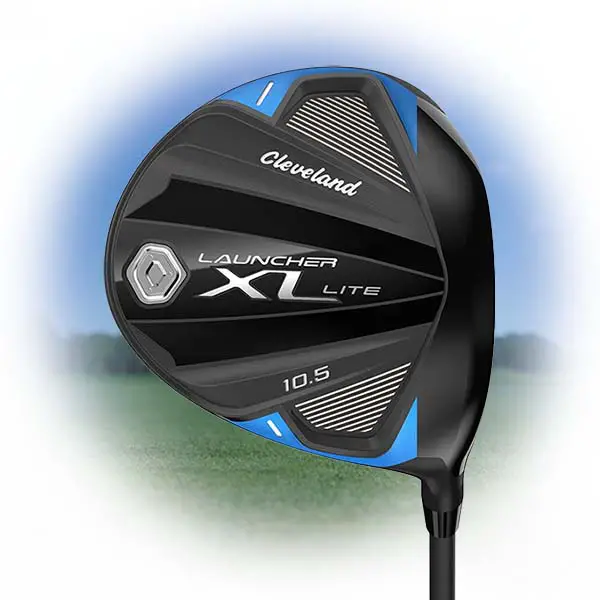
3. Cleveland Launcher XL Lite
You don’t need to spend your monthly rent to buy a driver that will help straighten your drives. A Cleveland Launcher XL driver embodies this.
When I recommend golf clubs for new players, I try to offer options that are high quality, don’t cost too much, and can provide good enough feedback that when they replace it, they know what they need.
The Cleveland Launcher XL Lite hits on every one of my criteria. Lightweight, responsive, forgiving, and above all else, affordable.
cleveland launcher xl lite Specs
- Lofts: 10.5°, 12° (10.5° for left-handed)
- Lie: 60°
- Head Size: 460cc
- Adjustable Hosel: No
- Adjustable Weights: No
- Stock Shafts:
- Project X Cypher 40 48g, 50g
Double isn’t usually a positive in golf. Here though, it is. A rebound frame adds a second layer of forgiveness and amplifies the effects of balls hit square. Mishits aren’t your traditional mishits with this one.
Whether you’re starting out or unwilling to give into the massive price tag of other top bands, Cleveland is the perfect middle ground for maximizing bang for your buck.
Pros
- The driver head is big and easy to hit. Simple as that.
- Added weight at the grip helps you get through the middle of your swing quicker and be square for contact.
Cons
- Zero adjustability.
- Designed more for overall forgiveness than it is slice reduction.
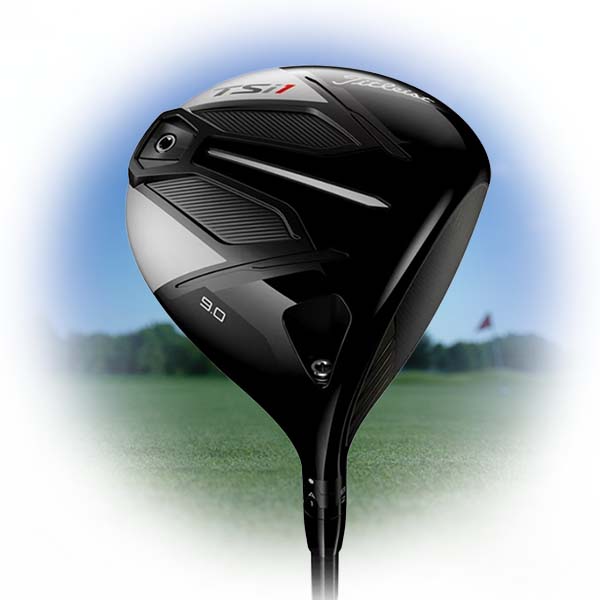
4. Titleist TSi 1
Want to add speed without ruining your tempo? Go with the Titleist TSi 1. You don’t have to do much to see major results.
How do you increase distance? Swing speed. How do you improve launch angle (besides learning how to control your angle of attack)? Swing speed.
The Titleist TSi 1 is a lightweight driver with a design tailored to increase swing speed regardless of what yours is when you start. In other words, playing this driver is an almost guaranteed solution for adding a little bit of juice to your tee game.
Titleist tsI 1 Specs
- Lofts: 9°, 10°, 12° (10° only for left-handed)
- Lie: 58.5°
- Head Size: 460cc
- Adjustable Hosel: Yes
- Adjustable Weights: No
- Stock Shafts:
- Aldila Ascent UL 41g, 44g, 47g, 48g
In most cases, drivers are offered with a few shaft options. The Titleist TSi 1 is offered with one, the Aldila ASCENT UL. The only choice you have is flex, which is decided for you based on swing speed.
Rather than head shape or weighting, it’s the stock shaft carrying the slice eliminating burden. Added weight to the butt-end pushes players to turn through the ball earlier and stay square at impact.
As a double bonus, it’s a shaft with an optimal kick point for improving launch angle. Add speed. Control slices. Elevate quicker. The Titleist TSi 1 takes care of it all.
Pros
- Lightweight for faster swing speed.
- Great classic Titleist look
Cons
- Won’t cure huge slices
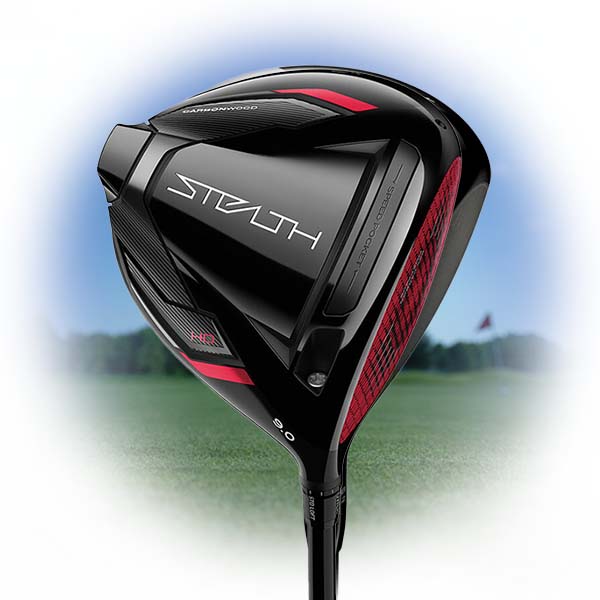
5. TaylorMade Stealth HD
There was a time where golfers continue to use wooden clubs after metal began taking over. So how long is it until carbon takes over?
Steel, titanium, and random blends of other metals. We’ve seen it all with drivers. Well, not quite “all”. The TaylorMade Stealth line features a new carbon face design and provides some of the best forgiveness in golf.
And because we’re focusing on the best drivers for slicers, and the most forgiving of that bunch, highlighting the TaylorMade Stealth HD was a no-brainer.
TAYLORMADE STEALTH HD Specs
- Lofts: 9°, 10.5°, 12° (9°, 10.5° for left-handed)
- Lie: Adjustable 56°-60°
- Head Size: 460cc
- Adjustable Hosel: Yes
- Adjustable Weights: No
- Stock Shafts:
- Air Speeder 45 47g, 49g, 51g
A carbon face is the gift that keeps on giving. Because of the flexibility the material provides, the “sweet spot” does not have to be as high on the face as it does with other draw bias drivers. Since TaylorMade was able to shift it lower, launch and control both improve.
As readers who slice the ball, you might be tempted to go with the Stealth Plus because of the sliding weight. This would be the wrong move as it has a neutral flight bias compared to the Stealth HD’s draw bias. Additionally, Stealth HD is more forgiving and high-launch-friendly.
Pros
- Anyone playing golf since the early 2000s remembers how Nike driver’s sound. There was something distinct about it that you could identify a Nike from across the course. Give it a couple years and you’ll be able to recognize Stealth carbon faced drivers the same way. It just sounds nice.
- All Stealth models come with a 4° loft sleeve, providing ample room to make adjustments.
Cons
- Carbon faces are softer and more impressionable than other materials. Hitting tees, small rocks or other obstructions ding the clubface, and is far more damaging than with other clubs.
- For the reason above, the premium life of these clubs is shorter than other top brands.
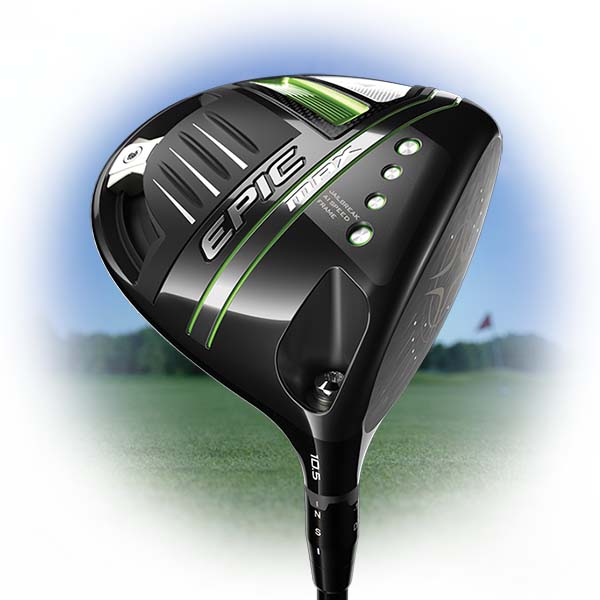
6. Callaway Epic Max
Fashion from last year might not be in style, but that doesn’t mean golf clubs aren’t. Going a model back might just leave you with enough left over for a new 56°.
A club sitting on the shelf for a year or two means nothing. This isn’t like buying an iPhone from two years ago where the operating system is already antiquated. Modern golf technology has made it so that many improvements year over year are aesthetic.
Yes, when new models are introduced, they’re better, but not so much so that saving a couple hundred dollars costs significant quality.
CALLAWAY EPIC MAX Specs
- Lofts: 9°, 10.5°, 12° (same for left-handed)
- Lie: 59°
- Head Size: 460cc
- Adjustable Hosel: Yes
- Adjustable Weights: Yes
- Stock Shafts:
- Project X Cypher 40g Graphite
- Project X HZRDUS Smoke IM10 50g Graphite
We like versatility, and the Callaway Epic Max delivers here big time.
A 16g perimeter weight made it easy to include in our best drivers for slicers list, but adjustability is the x-factor. The option to shift weight distribution makes it perfect for those who no longer need anti-slice assistance—even if it’s only temporary.
We also like that even among the entire Epic line, a line known for helping improve launch, the Epic Max provides the biggest boost of all.
Pros
- A fully movable weight provides the maximum relief for slices possible.
- A smooth head shape helps with comfort for players less used to draw bias drivers, which tend to have unique shapes.
Cons
- An adjustable weight placed or moved without purpose can be more damaging to your ball shape than using a common driver. Don’t over-adjust, don’t adjust without research.
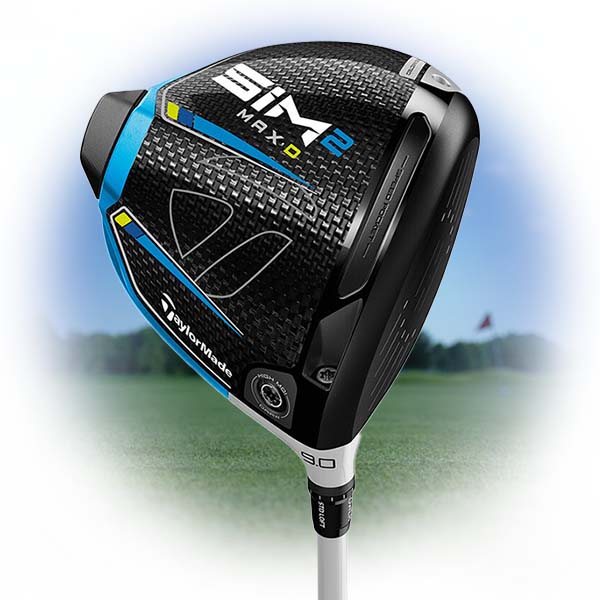
7. TaylorMade SIM 2 Max D
There’s enough people out there that think they need to replace their clubs every year. Lucky you and lucky me. The market for used golf clubs has never been nicer.
This is not the club you run out and buy after cutting the ball three rounds in a row. The SIM2 Max D is instead a driver designed for golfers with a consistent slice swing. In other words, your swing isn’t too broken, but you aren’t going to fix it. You’re going to embrace it.
TaylorMade went in a different direction than other companies with this draw-bias driver. A 22g weight on the back heel redistributes weight across the entire head, rather giving than special attention to any one specific area.
TAYLORMADE SIM2 MAX D Specs
- Lofts: 9°, 10.5°, 12° (9° and 10.5° for left-handed)
- Lie: Adjustable 56°-60°
- Head Size: 460cc
- Adjustable Hosel: Yes
- Adjustable Weights: No
- Stock Shafts:
- Fujikura Air Speeder 47g, 49g, 51g
This design doesn’t just increase forgiveness, it increases forgiveness at the exact place slicers are most likely to make contact. It’s a true double effort to straighten and add a few yards to drives.
With TaylorMade as one of the most gamed brands and the SIM2 Max D among the most gamed models, finding one with a lot of life at a reasonable price should not be a challenge.
Pros
- Split mass weighting helps to add speed and spin, exaggerating draw bias in the best way possible.
- A beefed up back side of the head increases swing speed on descent through improved aerodynamics and adds a few mph at impact.
Cons
- Draw bias is extreme. On one hand, that’s great. On the other, it is too difficult to shape the ball any other way with control.
Drivers For Slicers To Avoid
Titleist TSR3
I didn’t put the TSR3 here because it is a bad driver. In fact, the TSR line is among our highest-rated drivers this year. But it’s not one that I would recommend for slicers (despite the fact that I have seen it recommended for slicers on other sites).
To begin with, it’s designed with a smaller sweet spot for golfers that can make consistent impact on the center of the face. If you’re struggling with a slice, that probably doesn’t describe you.
The negative effect of off-center hits are going to cause more of a distance loss with the TSR3 than some of the other options on this list.
If you’re slicing the ball then you’re already losing distance so you want to maximize the ball speed on off-center hits as much as you can.
This driver does have a moveable weight, but those can only correct small amounts of side spin. If you’re looking for a club that will correct a slice that is having a significant impact on your game, then skip this club.
Powerbilt TPS Supertech
I am only listing this club here because I have seen it recommended to slicers on other sites.
The biggest appeal of this club is the low cost. But unfortunately, this is a case of getting what you pay for.
If you’re here looking for a club that can improve your game, this isn’t it. You’ll be much better off keeping your current driver and saving up for a used club of much better quality. You can find some great deals on the used market and you’ll get far better results than with a budget club like this.
What To Look For In A Driver For Slicers
Forgiveness
If you’re losing distance from slicing the ball then you want a driver that is going to maximize your ball speed even when you miss the sweet spot of the clubface.
Of course, if you spend time looking at our other reviews, forgiveness is often the number one criterion because it is the primary factor in how the club performs for the majority of you out there.
Adjustable Hosel
Being able to make adjustments to your club is the best way to affect your ball flight.
Most adjustable drivers will allow you to adjust both loft and face angles. That means that you can change the club to have a more closed face, thus helping you correct that slice.
But the main reason that this is the best way to try and correct your slice is that adjustable clubs can be changed back if you wanted to work on correcting your swing.
Sometimes, getting a club that is designed to fix a specific flaw can actually have the opposite effect of exaggerating that flaw because it reduces the negative feedback you get (a poor ball flight).
So an adjustable club allows you to play with a draw bias but practice with a more open face to try and correct the problem.
Draw Weight Bias
Clubhead weights can also help you correct a slice, but the effect isn’t as dramatic as you might think.
Moving weights around in the head of the club can move your ball flight 5-10 yards to the left or right, but rarely more than that. So if you have an extreme slice, they probably aren’t going to do much.
Offset Head
Thankfully, these used to be more popular than they are now. The offset of the head will give you that extra fraction of a second to close the clubface.
This can work pretty well, but it also means the club is permanently offset. So you may have trouble working to actually correct the slice and if you do make a better swing, you’ll end up with a hook.
But if you’re someone that doesn’t plan on practicing or working on their swing, then this may be a good option to help you enjoy the occasional round of golf.
